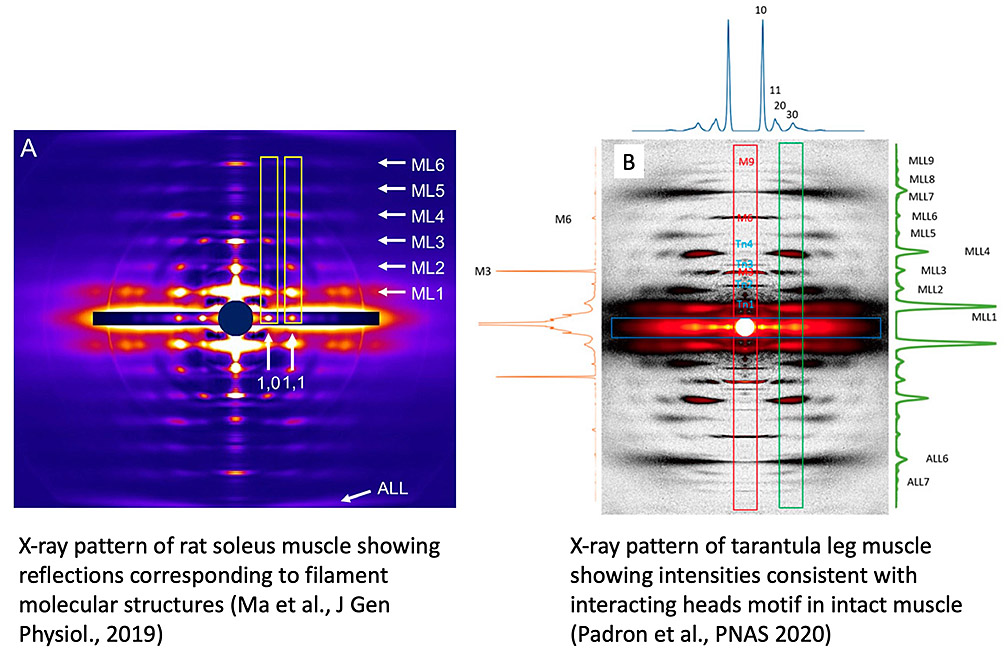X-ray diffraction of muscle
While EM provides the 3D structures of isolated filaments and molecules at high resolution, it does so outside the context of the muscle cell itself. X-ray diffraction is a powerful complementary technique, yielding information on filament structure in the intact muscle and on changes in structure on the millisecond timescale when a muscle contracts. The caveat is that filament structure is not directly determined, and depends on model building. We use high-intensity X-ray diffraction at the Advanced Photon Source (Argonne National Laboratory), in collaboration with Drs. Tom Irving and Weikang Ma. In one study we showed that the thick filaments in mammalian muscle are arranged in specific orientations depending on muscle type (fast or slow; A, below). This was a surprise, with implications for a deeper understanding of the structural basis of muscle physiology (Ma et al, J Gen Physiol, 2019). In another study we modeled the X-ray pattern of tarantula muscle (B, below) to demonstrate the presence of the interacting-heads motif in thick filaments of intact, living muscle (Padron et al., PNAS 2020). This is a crucial finding because the presence of this motif in muscle has recently been questioned, despite its ubiquitous presence in isolated filaments.
